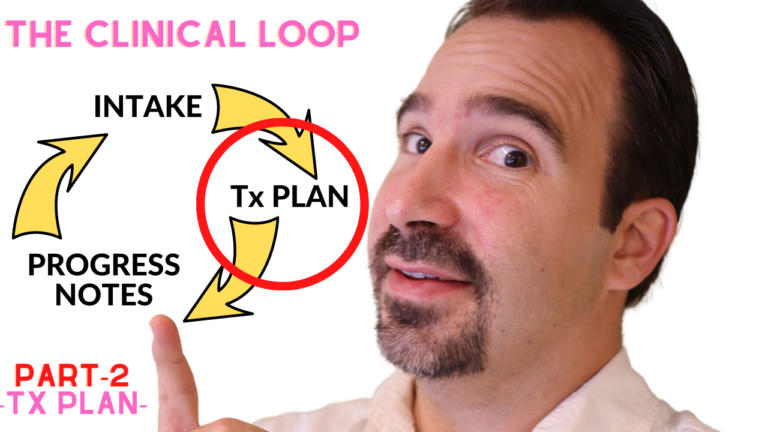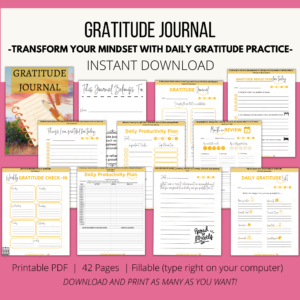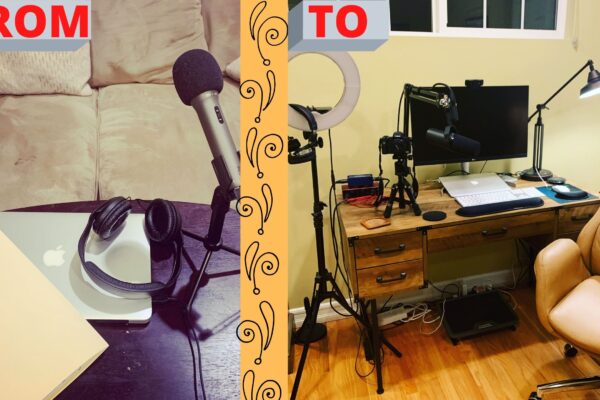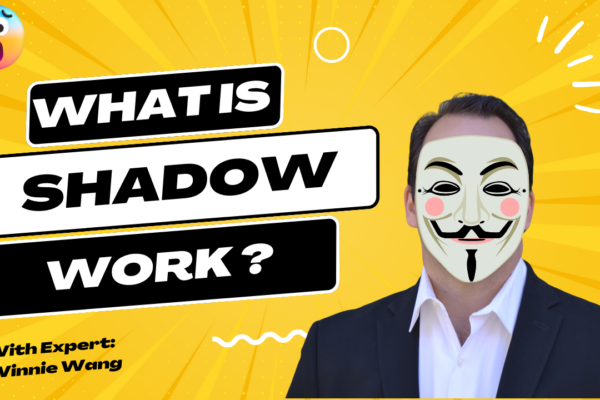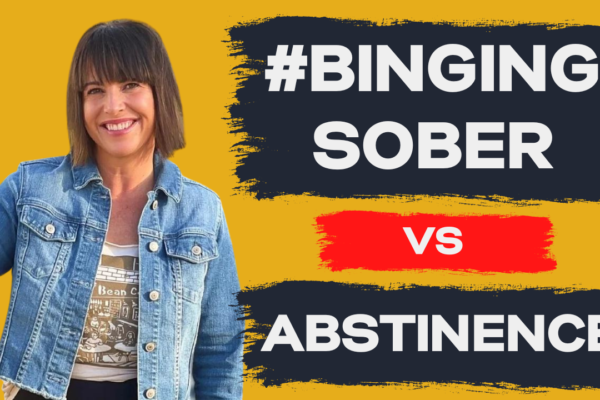In this post, share how to create a treatment plan as the second part of the clinical loop.
If you missed Part-1 of the clinical loop, you can find it HERE:
SHOW-NOTES (transcript)
Hi, Patrick Martin here, and in this post I will be sharing with you how to create a CBT treatment plan and this is the second part of the clinical loop.
So let’s jump in.
Hi and welcome back to The Mental Health Toolbox
My name is Patrick Martin and if you’re meeting me for the first time, I am passionate about teaching others coping skills and productivity hacks to improve their quality of life.
And in this episode, we’re going to be talking about how to create a treatment plan and how to do so as the second part of the clinical loop.
So let’s go.
OK, so this is the second part of the clinical loop because we really need to spend that time during the intake assessment in order to identify the client’s needs as well as their unique barriers, which we will use to formulate the treatment plan.
The things that are getting in the way of what they want as well as their strengths so we can leverage those strengths and join with the client in creating a treatment plan.
That makes sense.
And so, as we’re joining with the client and formulating their treatment goals, it’s really important that we spend the time to understand these unique strengths, struggles and needs.
Because if we don’t, then we run the risk of allowing the client to make general, ambiguous goals that make it really hard to know if we’re a getting traction and to actually see traction toward their goals, which just leads to frustration and more disappointment.
So we don’t want that.
And so, because we really want to see tangible results right?
That’s why people enter counseling in the first place.
That’s why any of us set goals is because we want to see some tangible change.
It’s important that we spend some time postulating what the end result is that we want.
What does that transformation look like so that we can work backwards and set some actionable steps in place?
This also keeps us accountable, because if we know what we’re looking for, it helps us create a road map that keeps us on course.
And if we don’t have a road map, how are we then going to know if we veer off course right into things that aren’t necessarily unimportant but maybe not pertinent to the things that the client came into treatment?
For that’s not to say that a treatment plan is set in stone, but it is important for us.
To be accountable to the treatment plan, right?
But we can always adjust it as needed.
Makes sense? , And so I would like to remind you that counseling, while it’s important to process thoughts and feelings, is more than that.
It’s about helping one identify what they actually want and then engaging in problem solving to address the barriers to.
Attaining that thing or those things, or that change that quality of life that they’re looking for.
A Treatment Plan Should Have Three Basic Elements:
and those three elements are:
- long term goals.
- Short term goals
- SMART goals.
Alright, so let me break that down with you.
OK, so the long-term goal.
The Long-Term Goal:
I like to think about as a big hairy audacious goals, right?
Like all BHAGs, big hairy audacious goals, we have to Grow as a person to achieve them.
We have to learn some new skill set.
We have to get outside of our comfort zone and into our discomfort zone in order to become the person who can then attain those goals, right?
That’s why it’s a transformation and that’s why they’re seeking help because most people on some level need a coach in order to make that happen.
If you’re trying to lose weight.
You need a fitness coach, right?
If you’re trying to learn a new language, sometimes you need a tutor, right?
So it’s the accountability and somebody that understands what skills are needed and need to be sharpened in order to become the person who can hit that goal and sustain it right?
And a long-term goal really should.
Be at least a year so it could be one year.
Five years, 10 years.
It’s usually something that you can’t just check off.
You know too quickly.
Short-Term goals:
Alright, OK, the second part is the short-term goals.
So these are the steppingstones that speak toward the long-term goal, right?
We think of these as objectives.
So these would be specific target behaviors, right?
Problem behaviors that are interrupting the flow toward the progress of those goals, right?
It could be procrastinating.
It could be social anxiety; it could be social isolation.
It could be stinking thinking.
It could be a lot of specific things, but the most important part here in the treatment plan, is that we are specific about the behavior we are trying to change and not falling into the trap of being too general.
“I just want to be happy.”
“I want to be more positive person.”
“I don’t want to be angry so much of the time”, right?
We need more specifics.
If it’s anger then it would look something more like I want to stop snapping at my kids when I’m irritated, right?
That’s more specific in context, so that’s really what we need to drill down for when it comes to the short term goals.
OK, alright and so.
Then how do we get specific?
Well, there are some acronyms to help us out that keeps us focused and honest about that.
The one you’re probably most familiar with I’ve heard is the S.M.A.R.T. model right?
Create A Treatment Plan Using The S.M.A.R.T. Model:
And SMART stands for:
- Specific.
- Measurable.
- Attainable.
- Realistic.
- Time-based.
So that kind of covers the ground as far as making sure that our goals are detailed, that they are attainable within a certain time frame.
So that keeps us accountable.
I don’t know about you, but my experience is that when we have a deadline, right, we’re more likely to get things done as opposed to procrastinating.
So it’s super important, so it’s kind of a marriage between those elements of making sure that we are.
Knowledgeable about what it is that the change we’re really trying to attain, as well as a way to make sure we’re measuring that progress.
So, for example, if it’s weight loss, somebody might say; “I want to lose wight, my excess weight.”
What does that mean?
So if we break that into pounds, that’s cool, you know.
OK, so I want to lose 80 pounds during the year.
Well.
If you say I’m going to lose 80 pounds in three months, you’re going to end up disappointed because that’s not realistic, so.
We know that you can lose 1 to 2 pounds a week, so you’d have to divide 80 by two and there you go.
You could realistically lose 80 pounds in that timeframe.
Be like 40 weeks so.
That’s what we mean when we say realistic, measurable, attainable goals.
Alright, another acronym that can help us out complements the smart model, and this is known as the P.O.W.E.R. model.
Using The POWER Model To Inform Your Treatment Plan:
So the P in the POWER model really stands for positivity.
So by that we mean we want to frame our goals in a positive sense, so as opposed to focusing on the negative behavior, we’re actually focusing on the ideal change.
So instead of saying something like I want to stop being an angry person, right?
We would say I want to be the kind of person who can bite their tongue right and step away as opposed to blowing up.
Uhm, so we’re being more specific in the way that we’re framing the positive aspect of the change.
OK, OK, the O and the power model stands for ownership.
So, ownership really means that we’re no longer blaming the environment.
Blaming the world for our shortcomings, right?
Something in therapy called cognitive dissonance, right?
We want to close that gap, so we stop blaming the tree for not being able to reach the Apple, right?
We want to be able to own it, because once we own the fact that we’re
Unable to reach the Apple on our own right.
Then we can start to problem solve.
We can build the ladder, right?
We can get a stick and knock the Apple down, but it’s not until we own our own shortcomings or inability to meet that goal on our in our current context.
The sooner we do that, the sooner we can then start problem solving a way to overcome that barrier.
Does that make sense?
So, ownership is super important, so we don’t blame others because that just robs us of time and the ability to problem solve.
OK.
Yeah.
OK, so the W in the power model?
That’s the WHAT.
So, this goes back to what we saw in the smart model with specificity.
So, if we know what exactly it is that we want to change, it’s much quicker than spending time going in circles talking about what we’re unhappy with in general terms.
So specific detailed statements about the problem is how we actually start to formulate a plan.
Right and the E in the power model that stands for evidence.
So again, kind of like the measurability of the smart model.
We’re looking for things that we can really show proof that we’re making progress, so an example would be like if somebody is trying to lose weight and they just depend on the number on a scale, it might be very discouraging, because while that’s.
You know, measurable.
It’s not always just about weight loss, right?
If you’re more specific as to be in better health, you might use a smart scale which measures other factors like visceral fat, muscle mass, skeletal mass, water retention, and so you might be gaining weight, but that could be muscle, not fat, and so.
If we’re not finding a way to measure and evaluate our progress.
With more factors than a single assumption, then we can run the risk of getting discouraged because we don’t feel like we’re making progress, where in fact oftentimes we are and we just quit too soon.
We quit before the Pinnacle point, right?
OK, and so then they are the last part of the POWER model that really speaks to relationships.
And the reason I find that this is probably the most important part of the POWER model that might differ a little bit from the smart model, is that it Causes us to think about the cost, right?
Whenever we take on a big, hairy audacious goal.
Oftentimes it comes with costs to our relationship.
If we want to go to Graduate School, that means time away from our family.
If it is weight loss, sometimes that changes the dynamic with our partner right where it can cause waves.
’cause now we’re doing things different than maybe our counterpart.
Same things with fitness.
So whenever we take on a big goal, it’s going to have a ripple effect on my relationships an it doesn’t mean that it’s a bad thing, it just means that we need to mentally prepare for what that is going to look like, because if we’re not counting the cost before we build, we’re likely to lose motivation and the messy middle.
And that’s not because we didn’t have the tenacity.
That’s because.
We didn’t consider the loss or the stress that we’re going to experience or that internal conflict when it comes to our relationships.
The guilt, the shame, you know I’m trying to start my business, but I I didn’t know it would feel like this.
You know, I would have this parent guilt for not having as much time with my kids or my spouse.
And so you can see how that conflict can easily sneak up on us if we’re not mentally prepared for that, and preparing the people around us for what that’s going to look like, you know.
Example: “Hey babe, it’s really important to me to go get my PhD and this is what this looks like and these are the anticipated challenges an changes and I want to make this decision together and plan ahead, so we know how to navigate this because these are some of the problems we’re going to have as far as time constraints were talking to your kids about why you’re doing what you’re doing.”
“This is so mommy or this is so Daddy can you know provide better for our family.”
“It’s important for me to have more autonomy so I can have better quality time with you by owning my own business.”
That’s important to start the conversation, but we can’t do that unless we’re counting the cost first right?
Alright?
Final Thoughts On Creating A Treatment Plan:
So, when it comes to making measurable goals right, those objectives we can use some tools and counseling to help us do that.
We call these outcome measures.
So, these are basically questionnaires that we use at the start of treatment during the intake that allow us to get a baseline.
A baseline score of the symptoms that somebody might be exhibiting. So this would be like the GAD-7, which measures symptoms of general anxiety disorder. We could use the Patient Health Questionnaire-9 which measures depressive symptoms for somebody. We could use something like the OQ-45.2, which measures A global kind of quality of life, self-assessment score and then it breaks it down to things like symptom distress, symptom severity, interpersonal relationship issues, stress.
So, we can use those scores as a way to kind of see if we’re making progress overtime, and if we’re not, then we can go back to the drawing board and figure out why not.
Why what we’re doing isn’t working right, and so it gives us a very tangible way to label a quantitative score to work from as well as kind of the qualitative things that we can use to measure as well.
Another consideration is that while we’re doing a treatment plan, it’s important to consider again those identified needs and barriers and think about the resources that we can link people to.
So if they’re struggling with employment or they can’t afford to go back to school and get their education or certification and something we could leverage things like Department of Rehabilitation.
If somebody is struggling in their academics in school, college, we can link them to disabled student services so they can get more time to take their exam so they can get a note taker if needed so they can get priority registration.
And so as somebody needs childcare we can identify low cost childcare services and link them up with that.
So if somebody needs a helper in the home because they’re disabled, or maybe they’re a caretaker for a loved one.
And they need more time back so they can focus on their own goals and not get burned out.
We can link them to IHSS, right?
And so, as we’re doing the treatment plan, think about.
Ways you can link someone to something, and you can tie that into the plan, right?
So that in six months you’re going to leverage this resource or that resource in order to make progress towards your goal.
Your big hairy, audacious goal, right?
And Lastly, I would have you remember that plans evolve like all of our goals.
What I want from now is probably going to change six months from now or a year from now, to some degree, the target moves a little bit, the target changes, and that’s oftentimes because when we start getting progress toward our goals, then our scope it widens our schema enlarges as far as what we realized that we want moving forward, and that’s part of the process.
So just understand that.
It’s OK.
Goals are not set in stone, but we do need a road map during each milestone.
So, we know what we’re looking at so that we know we’re making progress toward a meaningful direction.
OK, well there you have it.
I hope this was helpful.
I will be making Part-3, which is the final part, and that is the next episode and that will be on progress notes.
So, progress notes are kind of the final part of the clinical loop, and that is how we track progress along the way and how we actually do a physical documentation.
So, I hope you found this helpful.
If you did, please do share and share it with your peers and if you haven’t already, be sure to subscribe to the podcast or the YouTube channel.
If you haven’t as well as the newsletter, I do have a newsletter I send out, so you’ll get notified every time I post a new video or podcast episode.
Want to learn more? Check out my top picks for books on self-improvement and recovery HERE!
NEED CRISIS HELP? If you need immediate crisis help with your depression, you can call the National Suicide Prevention Lifeline at 1-800-273-8255 or text “START” to 741-741
OUTSIDE THE UNITED STATES: See International Suicide Hotlines
WHERE TO FIND MENTAL HEALTH HELP:
-NAMI Referral Helpline: 1-800-950-6264
-California’s Statewide Mental Health Helpline: 1-855-845-7415
admin
Latest posts by admin (see all)
- Serial Killer Spotlight: Dr. Caparelli’s True Crime Analysis - April 14, 2024
- Donna’s Law: Stop Gun Suicides - March 22, 2024
- The Silent Struggle: Men’s Mental Health and the Power of Conscious Parenting - March 22, 2024

